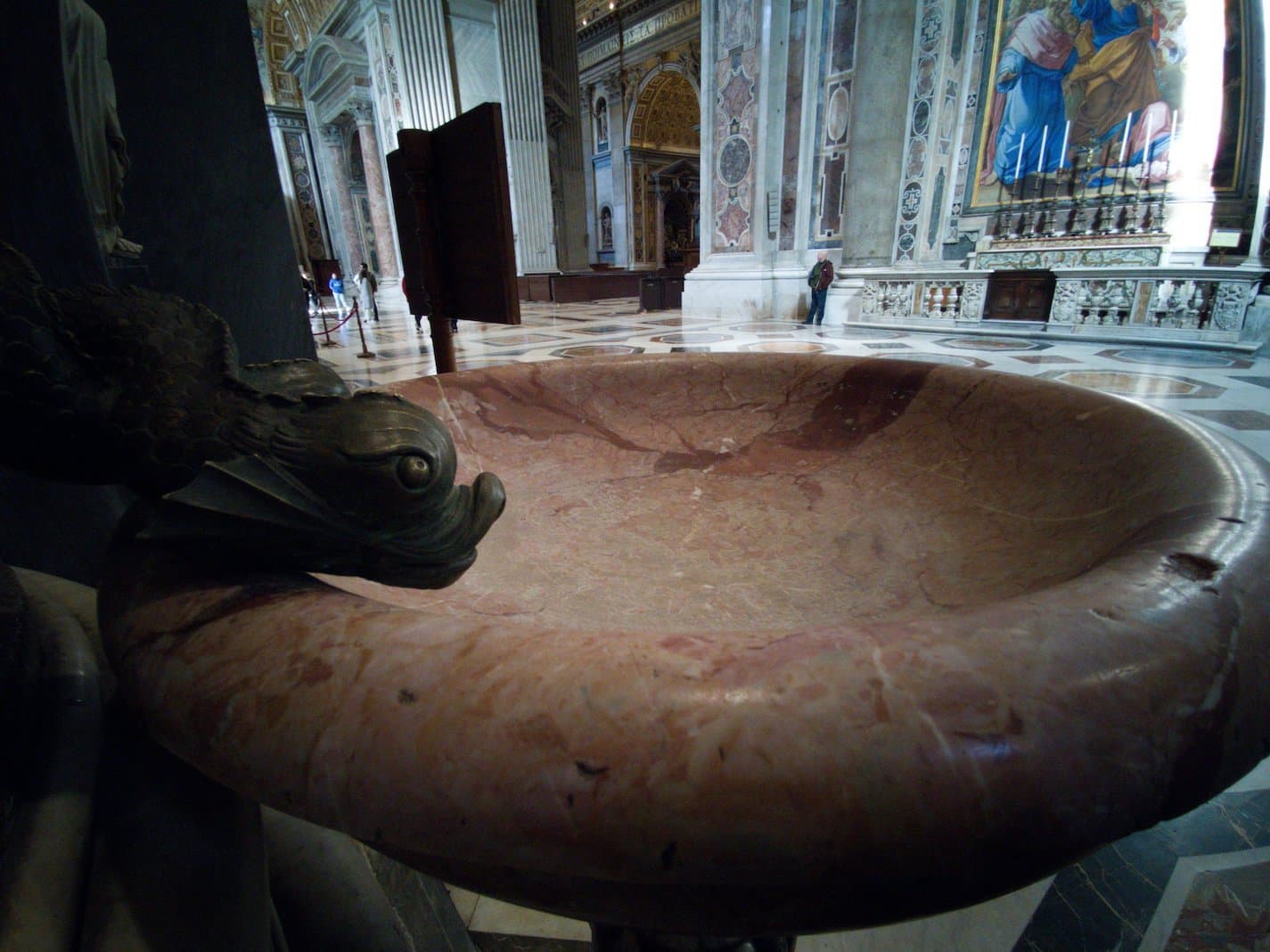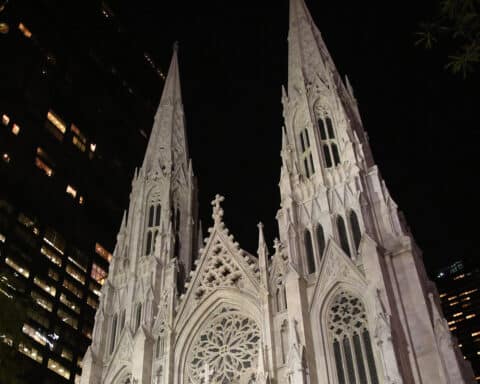(OSV News) In chapter 31 of her autobiography, the 16th- century Carmelite St. Teresa of Avila — one of four female doctors of the church, including her spiritual daughter, St. Thérèse of Lisieux — urges us toward frequent use of one particular, very common and (usually) widely available sacramental. “From long experience I have learned that there is nothing like holy water to put devils to flight and prevent them from coming back again. … For my own part, whenever I take it, my soul feels a particular and most notable consolation.”
During a recent holiday in Italy that included numerous visits to churches throughout the mainland and Sicily, I couldn’t help but think of the great reformer’s testimony and, in particular, on her insistence that evil and its helpers are repelled by the intentional use of holy water, whether sprinkled about one’s person, or, to use her word, “flung” into spaces of spiritual concern or where we would seek the protection of a blessing, even on the material things we use.
Because, sadly, as I entered churches and prepared to bless myself in these Italian churches my fingertips would meet the bone-dry bottoms of holy water fonts, or stoups.
The great holy water drought
During the Covid-19 global pandemic, the hard-hit Italian churches had emptied the vessels to prevent any possibility of spreading illness among those faithful who, for a while lacking access to the live celebration of Mass, might wish to nevertheless enter a church for a prayerful moment. Most churches here in the United States did likewise, with many parishes making holy water available in urns for the faithful to collect in small bottles and carry on their persons or to their homes.
Arguments can be made, and doubtlessly were made, for and against the drying of the holy water fonts while Covid was rampaging across the world, but while the illness seems like it is destined to be with us forever, the time of real crisis has ended. Liturgies are restored, people are once more gathering to pray, to shop, to travel, and mostly unmasked.
And yet in my travels, the holy water fonts were empty. Having the opportunity to attend occasional daily Masses and two Sunday Masses, I couldn’t help but notice that the pews were mostly deserted as well.
Obviously, I can’t prove a direct correlation between the absence of holy water and empty pews, but my head, my heart and my gut nevertheless make the connection. Encountering one empty font after another, I couldn’t help but wonder: What battles are we losing when without the chance to make the sign of the cross over ourselves and our children with holy water before we enter a sacred space — before we come together to worship, even in all of our sinfulness?
Because one of the great things about holy water at those entrances is that in a momentary but singular action, we are assisted in facing the supernatural together in worship.
Making the sign of the cross
I always think of the sign of the cross as a kind of key, meant to open us, body, mind and spirit, to the actions of the Triune God, and holy water is part of that. At consecration, during the liturgy of the Eucharist, the veil between heaven and earth is pierced, and we are standing at the thinnest place on earth. And we’ve been opened and sprinkled, made ready for that moment.
Every act of spiritual opening is an act of supernatural vulnerability — we tell our children to stay away from Ouija boards for precisely that reason — because a thought is a thing, and even innocent intentions can be preyed upon by what is evil. So, using a sacramental of blessing and protection, especially one that is so powerfully connected to being claimed for Christ in baptism, seems a sensible, necessary thing, before Mass and after — and, frankly, every day.
That the vulnerability of spiritual opening warrants a bit of reassuring protection — because where there is great holiness, great evil is always nearby (one of the great lessons of Calvary) — is also true of our sacred spaces. We cannot know what sort of malevolent energies are repelled by fonts and stoups full of holy water positioned at our church doors, but we can certainly imagine the opportunistic entities that might enter without them.
Pastors throughout the church, if you haven’t already, please fill the fonts and supply holy water to the stoups. Restore to us this first and fundamental reminder that we are a supernatural church in constant battle, and make handy this invaluable weapon. It is a good thing.





